#incunabula
Explore tagged Tumblr posts
Text
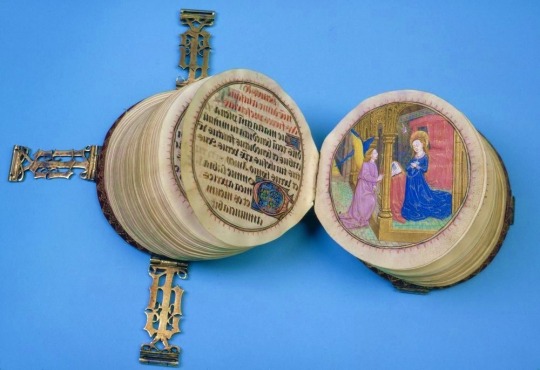
CODEX ROTUNDUS (Flanders, c.1480)
Held by Dombibliothek Hildesheim, Germany.
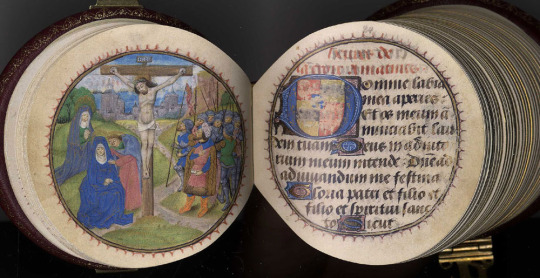
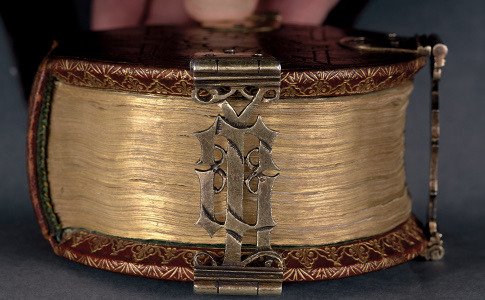
source
#beautiful books#book blog#books books books#books#book cover#vintage books#illustrated book#book design#incunabula#christian bible#book of hours#15th century#illuminated
7K notes
·
View notes
Text

When you accidentally type “moon faces” into Google instead of “moon phases.” Oops! This resting moon face is from Liber Chronicarum (1493).
#liber chronicarum#nuremberg chronicle#moon#moon phases#full moon#rare books#old books#incunabula#incunable#science history#moon face#library fun
787 notes
·
View notes
Text













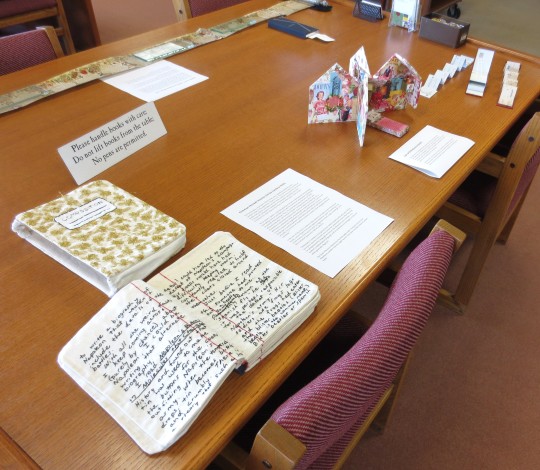


Doors Open Milwaukee
As we do every year, this past Saturday (September 28, 2024) we participated in the annual city-wide event, Doors Open Milwaukee, where over 150 institutions, facilities, and buildings open their doors to the community. Of course, as a public institution our doors are always open to the public, but this event offers us an opportunity to emphasize the public-facing aspect of our Special Collections.
During the event, we displayed select examples from our many collecting areas. These materials were arranged chronologically from the 15th century to the present, covering incunabula, literature, history, horticulture, printmaking technologies, state-of-the-art facsimiles, fine-press publications, and artists' books.
142 visitors walked through our doors on Saturday, with many coming in family groups. As you can see from the images, the children were as fascinated with our materials as the adults!
#Doors Open Milwaukee#events#Special Collections#open house#incunabula#fine press books#artists books#children in special collections
118 notes
·
View notes
Text
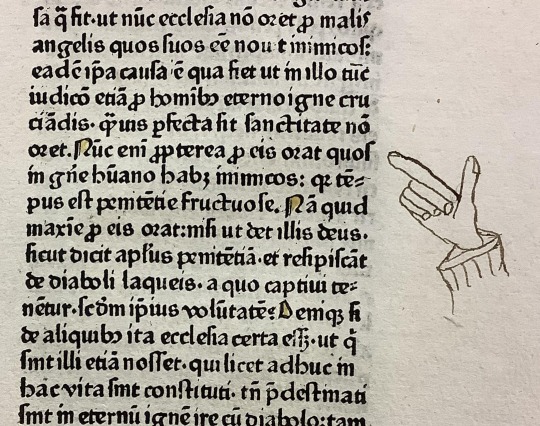


Three manicules from one of the oldest printed books in our collection, De civitate dei, published in Mainz, Germany in 1473.
76 notes
·
View notes
Text
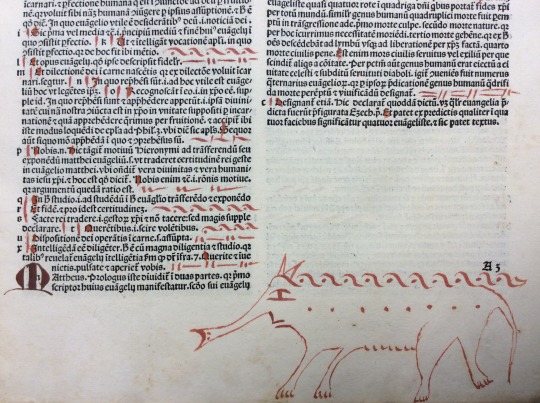
This handsome fellow, drawn in red ink, is an example of a ‘drôlerie’, and is found in the Library’s copy Biblia Latina, printed in Venice in 1489. This was originally a four volume Bible, but our copy only includes this, the fourth volume. The book has a large number of red ink doodles (see below), as well as contemporary marginal notes. Drolleries such as this are commonly found in medieval manuscripts, and incunabula, books printed in the 15th century. They are often grotesque and bizarre figures.
Renae Satterley
Librarian
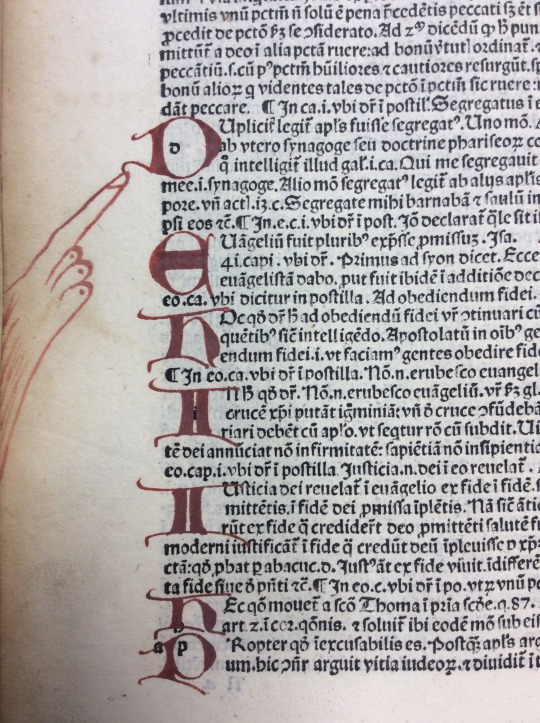
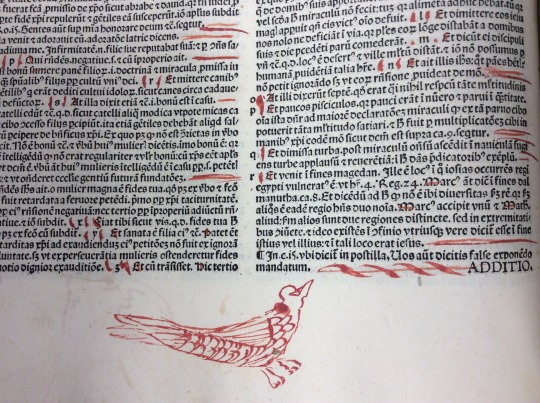



#library#law library#mtlibrary#inns of court#history#rare books#libraries#books & libraries#london#rare book#drôlerie#incunabula#marginalia
92 notes
·
View notes
Text
The Sistine Hall of the Vatican Library

The Library was formally established in 1475 AD.
Although it is much older, it is one of the oldest libraries in the world and contains one of most significant collections of historical texts.
It has 75,000 codices from throughout history, as well as 1.1 million printed books, which include some 8,500 incunabula.
#Sistine Hall#Vatican Library#library#historical text#incunabula#printed books#books#history#book collection
22 notes
·
View notes
Text
Have you ever wondered what characters from Greek mythology would look like in a medieval AU? Wonder no more:
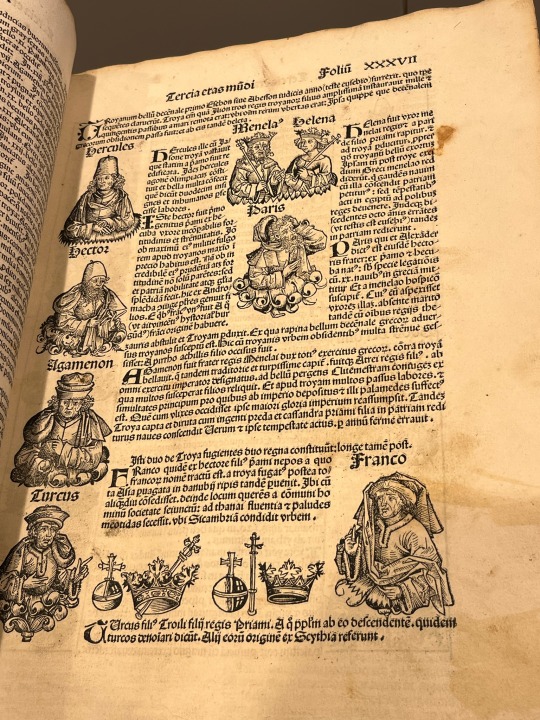
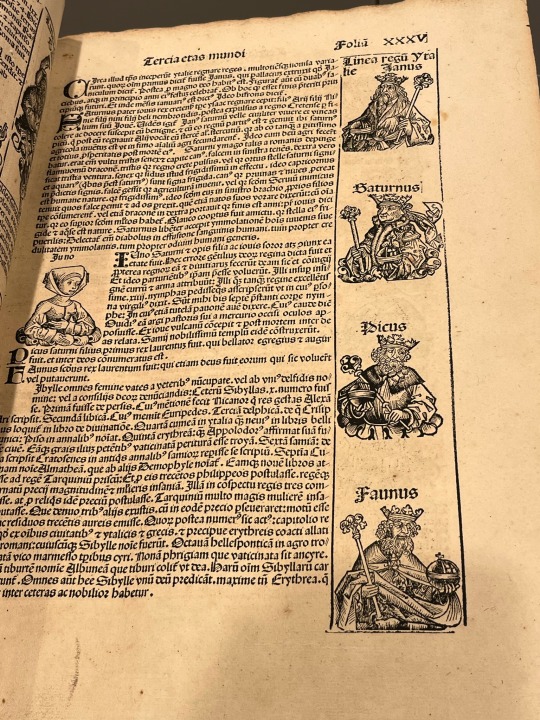
In the first picture are Hercules on the top left, Menelaus and Helen in the middle, Paris underneath them, and Hector and Agamemnon underneath Hercules. In the second picture are Janus, Saturn, Picus, and Faunus on the right, and Juno on the left.
(This is the Nuremberg Chronicle, a fifteenth-century German incunabulum.)
#early modern#incunabula#early printed books#medieval studies#greek mythology#greek myth art#trojan war#Hercules#Heracles#Agamemnon#menelaus#helen of troy#faunus#saturnus#Juno#janus
108 notes
·
View notes
Text









some incunabula and editio princeps I saw in the flesh (and got absurdly excited over) last week:
Hypnerotomachia Poliphili, allegedly by Francesco Colonna (Aldus Manutius, Venice, 1499)
Il principe by Niccolò Machiavelli (Antonio Blado, Rome, 1532)
Inferno by Dante Alighieri
Le Terze rime by Dante Alighieri (Aldus Manutius, Venice, 1502)
Dialogo sopra i due massimi sistemi del mondo by Galileo Galilei (Giovan Batista Landini, Florence, 1832)
I promessi sposi by Alessandro Manzoni (Guglielmini e Redaelli, Milan, 1840)
Canti by Giacomo Leopardi (Guglielmo Piatti, Florence, 1831)
Le avventure di Pinocchio by Carlo Collodi (Felice Paggi, Florence, 1883)
#book history#bibliography#italian history#printing#incunabula#dante#machiavelli#galileo#manzoni#leopardi#collodi#old books
14 notes
·
View notes
Text
9 notes
·
View notes
Text

THEODELINDA GOSPELS. (c.603)
Queen Theodelinda's Gospel Book Cover in Gold, Cameos, Enamels and Precious Stones, Ca 603
‘The book covers of Theodelinda are early medieval gold book covers dedicated by the queen Theodelinda to St. John the Baptist for a basilica which she founded between the sixth and seventh centuries at the Monza Cathedral in Monza, Italy. The book covers feature an inscription in which Theodelinda offers the book to the religious figure. Many scholars believe that the book covers, as well as the inscription were created in the early 7th century. The manuscript that the cover contained has been lost. Scholars regard the covers as an important example of Lombard metalwork, and they remain at Monza cathedral today. The book covers make part of a larger collection of objects gifted by the queen to the basilica she founded. ‘ Wikipedia
#beautiful books#book blog#books books books#book cover#books#incunabula#christian bible#gospel#queen theodelinda#holy roman empire#book design#treasure binding#gold#gemstones
80 notes
·
View notes
Text

"Seriously? You're going to interrupt me? I just got to the good part!"
Woodcut found in Liber chronicarum (1493).
#woodcuts#rare books#rare book illustration#incunable#incunabula#history#middle ages#books#library humor#woodcut wednesday#othmeralia
160 notes
·
View notes
Text






Typography Tuesday
SCHWABACHER
Not all Gothic typefaces are the same, and there were several distinctive designs that were used in the early years of printing. While similar to the rounded Rotunda Gothic, Schwabacher is more angular and has certain distinctive letter designs, such as in the capitals A and H. It was perhaps the most common typeface in Germany until Fraktur supplanted it by the mid-16th century.
The name comes from the German town of Schwabach, just south of Nuremburg, where it is believed the font was designed. The earliest extant appearance of the typeface is from an Augsburg printing of 1472 (Augsburg is about 80 miles (129 km) south of Schwabach). It was famously used by Anton Koberger for both his Latin and German editions of the lavishly-illustrated Nuremberg Chronicle of 1493, a comprehensive history of the world from the creation to the date of publication compiled by Nuremberg scholar and doctor, Hartmann Schedel. Those editions proved to be so popular that the Augsburg printer Johann Schönsperger (ca. 1455-1521) plagiarized the editions to produce his own small folio German edition, with 2100 new woodcuts, in 1476, followed by a Latin edition in 1497, and then another German reprint in 1500, all using Schwabacher type.
The original leaf shown here is from the p signature of Schönsperger's 1497 Latin edition which is included in the leaf book . . . the highest form of flattery . . . by the American book designers, letterpress printers, and specialists in the Nuremberg Chronicle Adrian (1923-1988) and Joyce L. Wilson (1914-1996), printed under the direction of George R. Kane (1913-2009) at the Cowell Press of UC Santa Cruz by Felicia Rice (b. 1954) and Nick Zachreson in an edition of 90 copies in 1982. Ours is one of 60 copies bound in half leather. For the record, UWM Special Collections does not condone the breaking of books for sale or for inclusion in leaf books. Our copy was part of the donation from our late friend Jerry Buff (1931-2025).
View other posts on Gothic type.
View our other Typography Tuesday posts.
#Typography Tuesday#typetuesday#Gothic type#Schwabacher type#Schwabacher#Johann Schönsperger#Augsburg Chronicle#Nuremberg Chronicle#the highest form of flattery#Adrian Wilson#Joyce L. Wilson#Cowell Press#George R. Kane#Felicia Rice#plagiarism#incunabula#leaf books#Jerry Buff#15th century type
46 notes
·
View notes
Photo


Why is there a big block of blank space surrounding the first letter on this page?
It’s because it was meant to be decorated. Early printed books often featured hand-colored initials, added after printing by a person called a rubricator. That small letter Q is called a guide letter, and it’s there to let the rubricator know which letter to write in, without having to read the text.
The second image is an example of what this page might have looked like, had its owner paid for the services of a rubricator.
(Image 1 via Lives. Latin. by Plutarch per Nicolaum Ienson Gallicum, 2 Jan. 1478; Image 2 via Historiae Philippicae. 1470 by Justinus, Marcus Junianus. Udalricus Gallus [Ulrich Han], 1470?)
#bookhistory#rare books#incunabula#printing#printing history#special collections#mizzou#university of missouri#libraries#kelli h
78 notes
·
View notes
Text

This incunabule (incunabulum) which was printed in Cologne in c. 1477, belonged to the collection of Robert Ashley (1565-1641). It is a biographical compendium of Church fathers and a history of the early Church. The printed initials are illustrated by hand with these comical figures. This mimics the way manuscripts were produced, a practice that continued beyond the advent of printing in circa 1450.
#library#law library#mtlibrary#inns of court#history#rare books#libraries#books & libraries#london#rarebook#incunabula#church history#drolleries#robert ashley
29 notes
·
View notes
Text

“The way by which the [faithful of Israel?] crossed the Red Sea with dry feet.” (in Latin)
This photo is a closeup I took of a map of Egypt from Breydenbach's 1486 description of his pilgrimage to the Holy Land. It was common for medieval and early-modern artists to depict the Red Sea as actually being red! This map also shows a line through the sea where the Israelites supposedly crossed during the exodus from Egypt, as well as many contemporary monasteries.
Source: Sequ[en]itur inicium huius peregrationis a solo natali vsq[ue] venecias (1486) by Bernard von Breydenbach. Photo by me.
#breydenbach#pilgrimage#incunabula#early modern books#early modern maps#red sea#15th century#travelogue#history of maps
12 notes
·
View notes